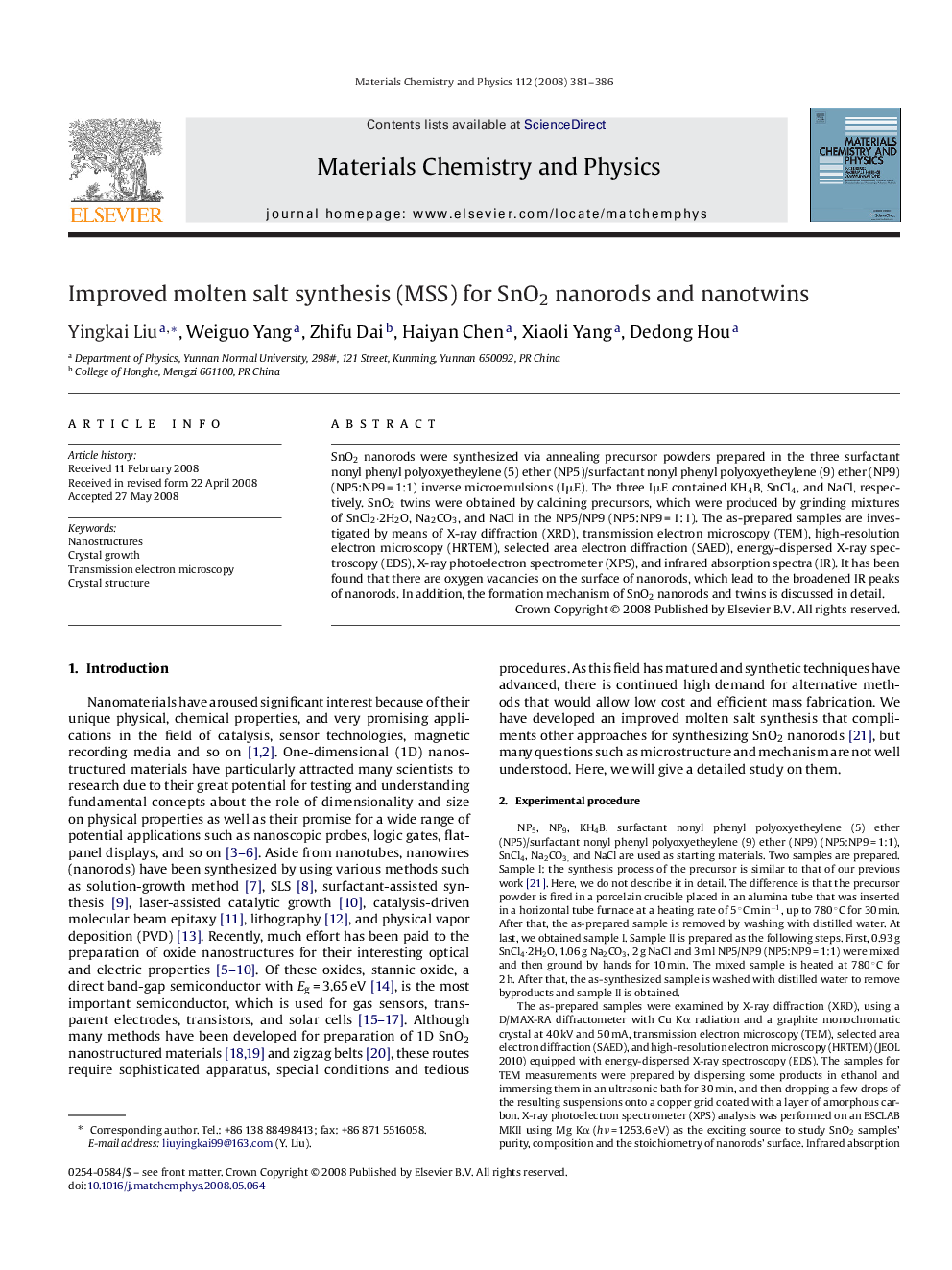| Article ID | Journal | Published Year | Pages | File Type |
|---|---|---|---|---|
| 1526387 | Materials Chemistry and Physics | 2008 | 6 Pages |
SnO2 nanorods were synthesized via annealing precursor powders prepared in the three surfactant nonyl phenyl polyoxyetheylene (5) ether (NP5)/surfactant nonyl phenyl polyoxyetheylene (9) ether (NP9) (NP5:NP9 = 1:1) inverse microemulsions (IμE). The three IμE contained KH4B, SnCl4, and NaCl, respectively. SnO2 twins were obtained by calcining precursors, which were produced by grinding mixtures of SnCl2·2H2O, Na2CO3, and NaCl in the NP5/NP9 (NP5:NP9 = 1:1). The as-prepared samples are investigated by means of X-ray diffraction (XRD), transmission electron microscopy (TEM), high-resolution electron microscopy (HRTEM), selected area electron diffraction (SAED), energy-dispersed X-ray spectroscopy (EDS), X-ray photoelectron spectrometer (XPS), and infrared absorption spectra (IR). It has been found that there are oxygen vacancies on the surface of nanorods, which lead to the broadened IR peaks of nanorods. In addition, the formation mechanism of SnO2 nanorods and twins is discussed in detail.
